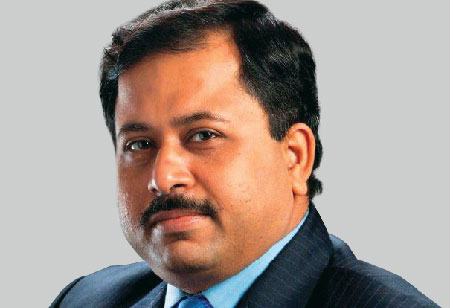By Joy Chakraborty, COO, P D Hinduja Hospital & Medical Research Center

Joy Chakraborty, COO, P D Hinduja Hospital & Medical Research Center
Indian healthcare has undergone a major transition in the last decade. This transition has taken place in the delivery format, healthcare set up and most importantly in the approach of addressing healthcare issues. Very importantly, it can be noted that healthcare has not remained only a curative area but significant development is taking place in various aspects. A typical provider is not based out of a typical hospital structure but has formed healthcare set ups like clinics, homecare and day care formats.
India's Footprint in the Global Health-care
Indian Healthcare has a wide array of services and facilities. Indian professionals (medical & nursing) and home-grown technology are greatly admired across the globe. It is needless to say these elements have created many centres of excellence in this country and are comparable and maybe ahead of their international counterparts. However, these high class facilities are not available across the country and there are many centres which lack the basic and moderate infrastructure and resources, hence, there is a wide gap in the available services. Role clarity between the private and public stakeholders along with creation of sustainable healthcare infrastructure through technology can significantly bridge this gap.
From the technology perspective, healthcare sector has seen the introduction of technology in multiple forms and areas whether it is medical or Information Technology or in a format which is helping in the improvement of operations in the hospital. Some of the key technological advancements have been seen in diagnostics which has ensured quick medical interventions. The Indian healthcare fraternity has also started utilizing several technologies which are available across the world and some of our centres of excellence are probably better equipped and well established. To get Indian healthcare on a common platform with global standards, India needs to start to create a common database of patient data which can be easily accessed by multiple providers instead of creating and maintaining multiple databases in silos. Point of care and advanced diagnostic technology should be our top priority and of course, innovations in therapeutics can boost Indian healthcare significantly.
Dealing with Challenges
Today, Indian healthcare has a spectrum of provisions/facilities meeting the requirements of the population from different strata. The purchasing power and variability in disposal income has made multiple choices and options available in the market. A huge demand and supply gap especially in tier II and rural areas where significant numbers of citizens are residing have made healthcare inaccessible for many. Even our affordability is a major cause of concern; however with the introduction of several government-supported schemes and local community insurance programmes may improve the situation.
Along with the challenges of accessibility and affordability, ensuring quality is also a great concern. These challenges are emerging in an exponential way due to the presence of communicable diseases like TB, malaria, and more along with non-communicable diseases which is a major cause for concern. Technology can be an enabler to manage and control both communicable and non-communicable diseases. Methods of good monitoring and ensuring the compliance level in treatment can be practised through technology by implementation of disease management programme, advanced analytics and support big data. Adopting cost effective technologies like telemedicine can also take Indian healthcare a long way ahead.
Living Up to the Change
Hinduja Hospital has always remained at the forefront of technology adoption and implementation. A recent technology innovation in TB testing has given the entire TB control programme a new perspective. Similarly ensuring safe blood transfusion through NAT testing, accurate diagnostic procedures using MRI, Gamma Knife are some relevant instances. Our hospital's endeavour to bring in an advanced HMIS attached with multiple innovative applications will keep us pertinent in today's market.
Going ahead with the constant adoption of new technology, we have faced the challenges which are typical of any organization `Change Management'. However, we have been fortunate enough to have many fast learners who have taken up the challenge and once they have realised the benefit of the new technology they have come forward to practise and be proponents of the same.
In our hospital, our learning and expectation building comes from the feedback and suggestions received from various different stakeholders and our experiences are the pivotal point for the evolution of all our improvements. Professionals are committed towards patient centric health care delivery, which is the guiding goal of our founder as well as our trustees. Keeping that in mind, we will be working towards improving efficiencies (e.g. reduction in reporting time, waiting period) and patient satisfaction. From the clinical aspect we will be looking at installation of high end technology in some of our key thrust areas.
We use cookies to ensure you get the best experience on our website. Read more...